indicator
Hanbok (Traditional Korean Clothing) – a beautiful cultural treasure worn on the body
The exquisite and elegant hanbok emanates a dignified beauty that embraces the natural harmony of form, structure and color.
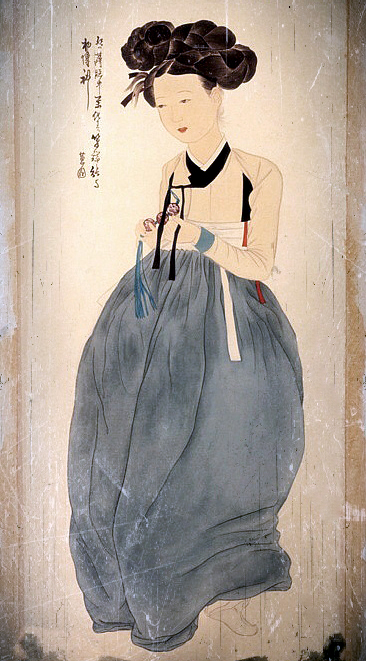

<Hanbok has a history of over 1,600 years. Portrait of a Beauty (above) and Dance with Two Swords (below) are both by Shin Yun Bok, the most representative genre painter of the Joseon Dynasty.>
Hanbok, the traditional clothing of Koreans
"Hanbok" (also called "joseonot") is a collective term for traditional Korean clothing. Though there have been slight changes in hanbok over time in terms of material, preferred colors, and the length of the skirt or jacket, the hanbok's basic format has more or less remained the same for the past 1,600 years.
Hanbok can be classified into ceremonial and everyday dress, each of which can be further classified by gender, age and season. All types of hanbok are created beautifully through combinations of straight and slightly curved lines. Women's hanbok in particular are recognized worldwide for the simple yet delightful harmony of their short jackets and full skirts. The jacket, which is put on one arm at a time, makes the upper body look very small, while the skirt worn wrapped around the waist makes the lower body look full, creating an attractive balance. The cut and drape of the clothing complements not only the Korean female physique but also flatters and fits most other body types as well.
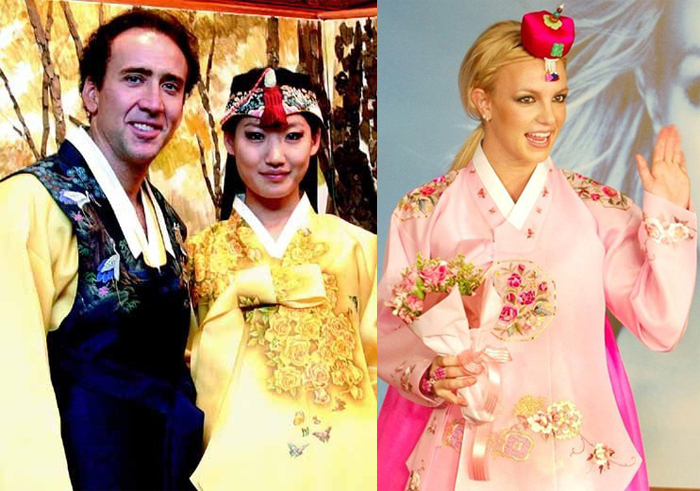
<Foreign celebrities (left to right: Nicolas Cage, Alice Kim, Britney Spears) wear hanbok on visits to Korea.>
The eight beauties of hanbok
The beauty of hanbok is found in the elegant flow of its lines and in its pleasing color palette. Just like the gently sloping eaves of a traditional Korean house, the harmony of the curved baerae (bottom line of the jacket's sleeves) with the sharp straight lines of the dongjeong (creased white lining of the jacket's collar) well reveals the subtlety and exquisiteness of traditional Korean aesthetics. The hanbok's attractiveness even shines through in the lovely lines created by the body's movement while wearing it—one of the reasons it enjoys such global attention. The hanbok is typically defined as having "eight beauties," as described below.
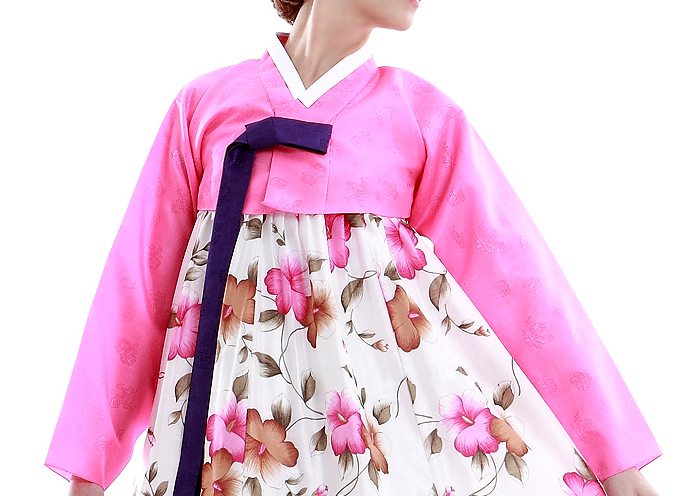
<Hanbok Jeogori (upper garment) with dongjeong, baerae and Goreum (two straps of Jeogori).>
-
- 1. Beauty of structure
-
- The women's hanbok, with its short jacket (Jeogori) paired with a full skirt, possesses a simple structural beauty and rhythmic flow that complement the body's movements.
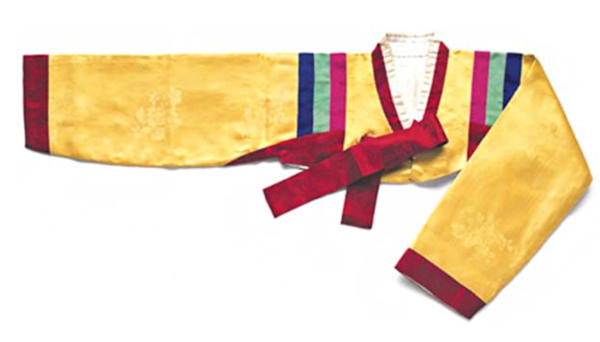
- <Jeogori of a woman's hanbok from the Joseon Dynasty.>
-
- 2. Beauty of form
- The hanbok radiates a natural physical beauty in its attractive silhouette and lines, which allow for unrestrained movement of the body.
-
- 3. Beauty of creativity
-
- In contrast to Western clothing, which achieves dimensionality through straight-lined fabric and stitching techniques, hanbok is made with flat fabric in a linear shape that only achieves dimensionality when it is worn on the body. When placed on the human frame, the hanbok takes on a life of its own—one that is natural, elegant and flowing.
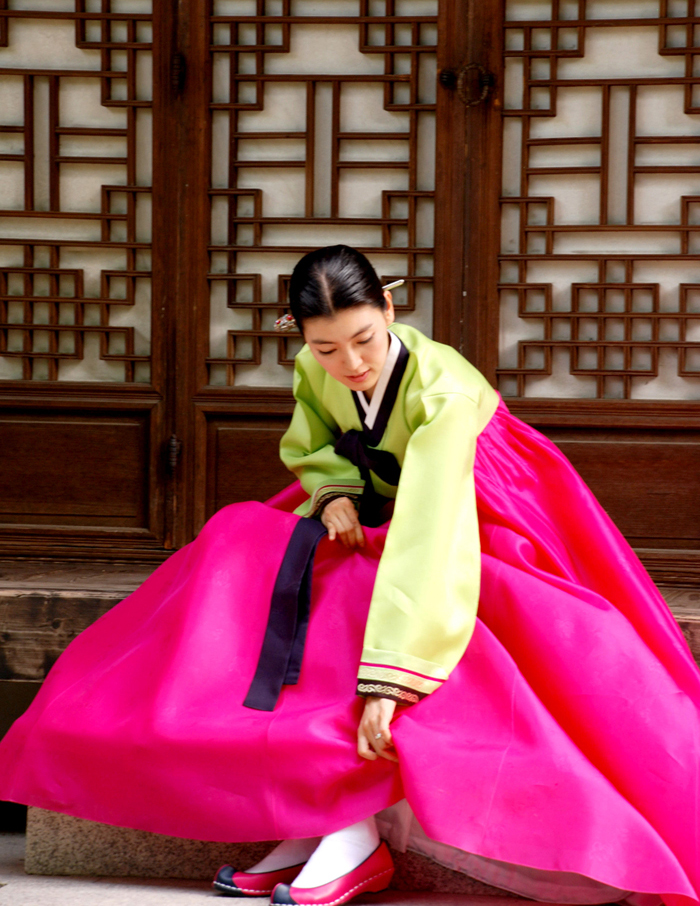
- <A woman wearing hanbok puts on "flower shoes" as she leaves the house.>
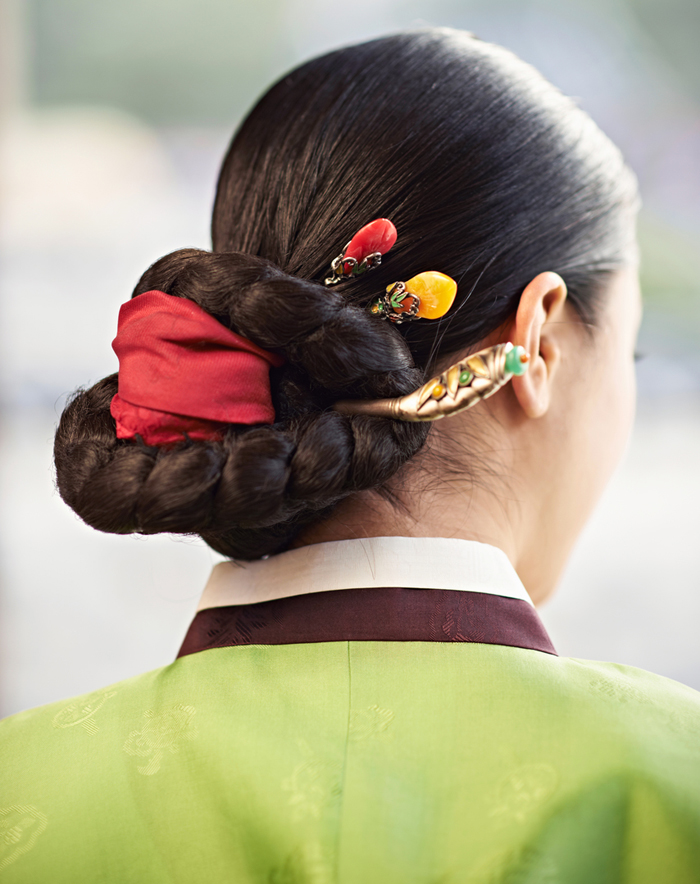
- <The hair of a woman wearing hanbok is decorated with a binyeo (Korean traditional hairpin).>
-
- 4. Beauty of harmony
- The hanbok features straight and curved lines, giving it an attractive flow representative of a uniquely Korean aesthetic. The graceful, harmonious movement that happens when the hanbok is actually worn is praised the world over.
-
- 5. Beauty of color
-
- Hanbok colors are decided according to the "five colors theory" ("obangsaek" in Korean), which refers to the theory of yin and yang and the five elements. The hanbok commonly makes striking use of naturally-occurring colors.
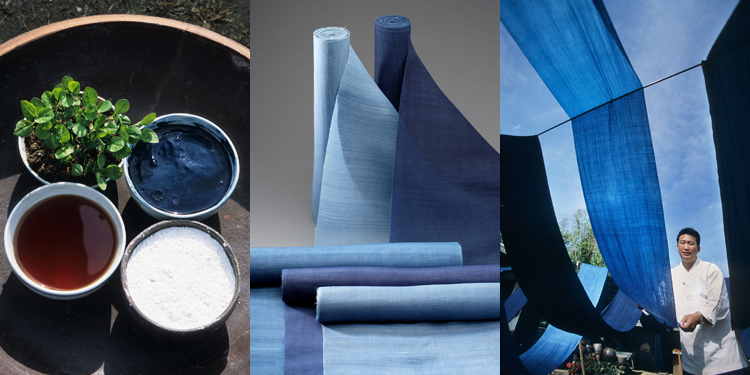
- <Fabric dyed with organic ingredients enhances the hanbok's color aesthetic.>
-
- 6. Beauty of nature
- The curved line, one of the hanbok's most eye-catching features found in its full and loose shape, rhythm, and irregular proportions when worn, has a natural angle devoid of artificiality that creates a free-flowing effect and brings out the texture of the natural, hand-woven fabric.
-
- 7. Beauty of empty space
-
- Some aspects of the hanbok design are left intentionally "empty," to be filled by the wearer uniquely, giving the hanbok a depth not commonly seen in clothing.
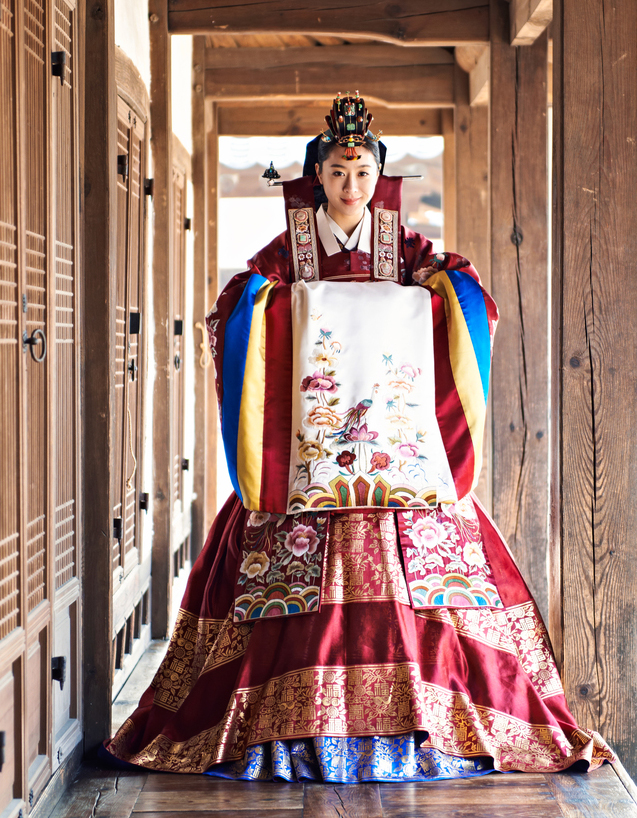
- <A bride's hanbok worn at a traditional Korean wedding.>
-
- 8. Beauty of personal character
-
- The full shape of the hanbok emphasizes the wearer's authority and dignity. While this may have been impractical, it was nevertheless a feature that made hanbok a reflection of social status and propriety. The simple harmony of the color palette created by limiting the number of bright colors used places greater weight on the wearer's character over the hanbok's decoration.
- Certain hanbok designs represented the social ranking of the wearer. The king, for example, was represented by the dragon and the queen by the phoenix. Tiger designs were used to represent military officials and were commonly placed on the shoulders, fronts and backs of their court robes. Civil officials were represented by the crane, an animal believed to be pure and resilient.
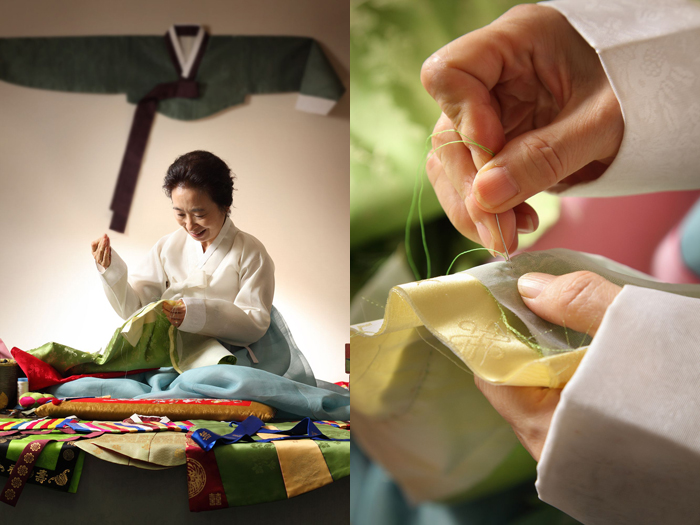
- <Needlework Master Artisan Gu Hye-ja creates beautiful hanbok using traditional needlework techniques..>
Beyond its graceful silhouette and vibrant colors, hanbok reflects a deep cultural philosophy rooted in harmony, modesty, and elegance. Experience this timeless beauty through our collection of traditionally tailored hanbok, designed to celebrate Korean heritage in today’s world.
Explore Our Traditional Hanbok Collection
Hanbok, the most "Korean" dress code
Having coexisted with the Korean people ever since the beginning of their history, hanbok is a beautiful cultural heritage that all Koreans should be proud of not only for its historical value but also for its uniquely Korean artistic significance. The hanbok, which changes only slightly according to the season, social status and situational context, is highly regarded for its creative design and overall elegance.
Although the hanbok to some extent lost its place in Korean daily life due to the rapid inflow of Western civilization after Korea's opening to the Western world in the 19th century, it is still the most representative of Korean dress and a symbol of the identity of the Korean people.
Hanbok is not just a garment of the past — it is a living expression of identity, artistry, and tradition that continues to evolve.
Bring a piece of this enduring legacy into your life with our curated selection of handmade Korean hanbok for both formal and modern occasions.
View the Timeless Elegance of Hanbok

<Hanbok is now being blended with more modern forms of dress, opening up a new era of Korean clothing design.>
* Photos courtesy of Korea Tourism Organization and Cultural Heritage Administration of Korea.
.jpg)
